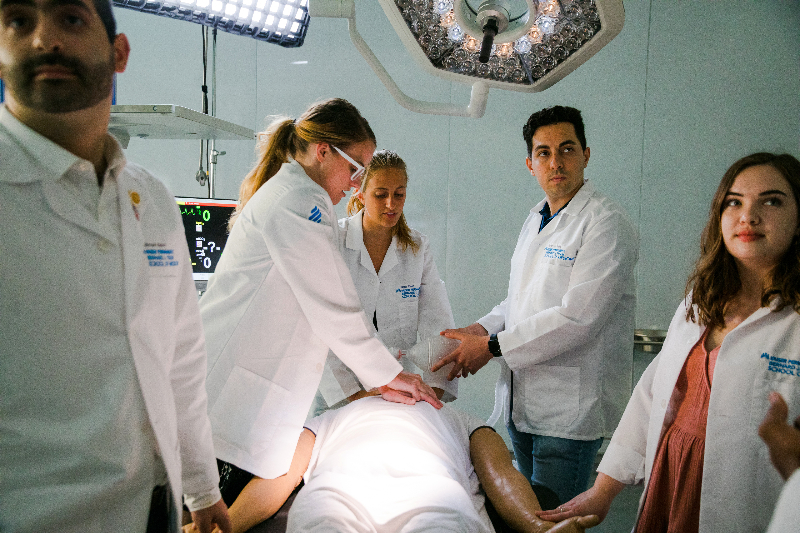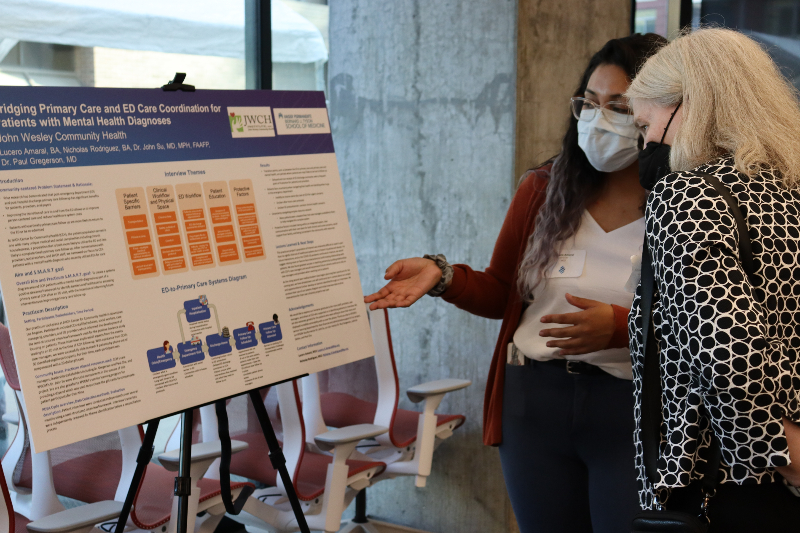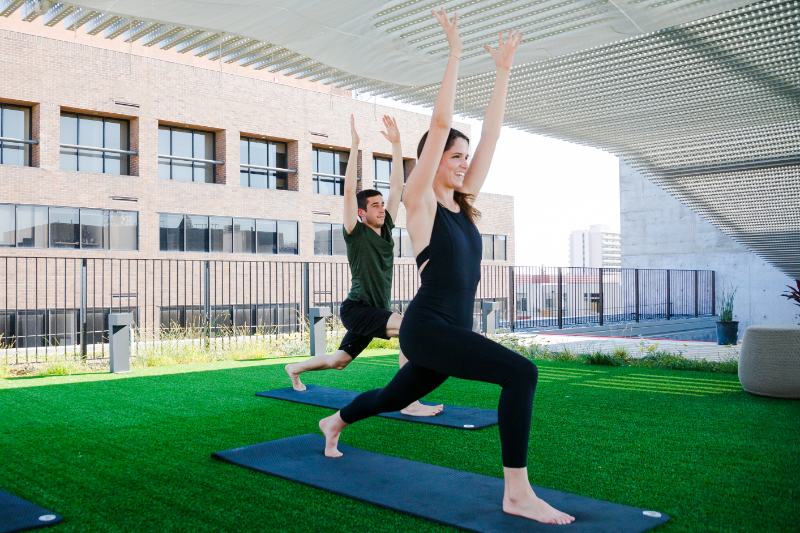Kaiser Permanente Bernard J. Tyson School of Medicine’s Simulation Center provides hands-on experience in a supportive environment.

Inaugural class at the Kaiser Permanente Bernard J. Tyson School of Medicine with faculty and deans.
A look back at the Kaiser Permanente School of Medicine’s first year
Launching a new medical school amid a global pandemic
Last July the Kaiser Permanente Bernard J. Tyson School of Medicine welcomed its 50-member inaugural class under almost unimaginable circumstances. Beginning medical school is always challenging but doing so during a once-in-a-century pandemic meant that students — as well as faculty, staff, and leadership — faced unprecedented obstacles.
More than a decade in the making, the school based in Pasadena, California, had to recalibrate everything from admissions interviews to instruction when the global crisis struck the United States in March 2020.
“We certainly never anticipated opening a new med school during a pandemic. But our extremely creative and talented students, faculty, and staff rose to the occasion, adapted to the pandemic’s constraints, and made it work,” says Mark Schuster, MD, PhD, the school of medicine’s founding dean and chief executive officer. “We learned so much together along the way.”
The first thing school leaders had to decide was whether to open in person, as planned, or to adopt a strictly virtual learning environment, as many medical schools were doing. After consulting with deans, medical education experts, and local and national public health officials, the decision was made to pursue a hybrid method of instruction that would facilitate stronger interactions among students, and between students and faculty, during the inaugural class’s critical first year.
Our extremely creative and talented students, faculty, and staff rose to the occasion, adapted to the pandemic’s constraints, and made it work.
— Mark Schuster, MD, PhD, founding dean and CEO
The curriculum was painstakingly adapted for instruction while physically distanced and masked, as well as for virtual learning. The school’s medical education building, designed to accommodate more than 200 students once the first 4 classes started, also provided enough space to convene in person while following strict health and safety protocols, including proper physical distancing as public health conditions required.
“It has been a gift to be in a new school where we had the space to spread out and still be in person, but a real challenge to know my kids and spouse didn’t have the same privilege,” says first-year student Kelly Shriver. “As a family, it felt pretty isolating this year even as I was able to grow and flourish in this community as a student.”
While the biology of coronaviruses was already part of the curriculum, the COVID-19 pandemic gave the topic more urgency and provided an opportunity to teach students about vaccine development, hesitancy, and the ethics of distribution. Students put their classroom training into practice by volunteering at a COVID-19 mass vaccination center in Southern California this past spring. Forty-two students rotated through all procedural aspects of vaccine administration and distribution under the supervision of 12 faculty volunteers. The need to address health care disparities, which is central to the school’s mission, was also brought into stark relief by the health crisis.
The school was able to provide students with early clinical experience, as planned, through longitudinal, integrated clerkships in family medicine or internal medicine at Kaiser Permanente clinical sites, within their first few weeks of instruction. The service-learning curriculum, which places students at 1 of 6 federally qualified health centers on a monthly basis, followed shortly after. Depending on current health conditions, students interacted with Kaiser Permanente clinical care teams and patients in person or virtually, providing a crash course in providing care via telemedicine.
“Talking to patients in the clerkships has been the highlight of my year by far,” says Lucas Saporito, a member of the inaugural class. “I’ve learned so much from them. It is a blessing to be able to practice my clinical skills so early on in my medical education.”
Reprinted from the Kaiser Permanente Bernard J. Tyson School of Medicine website. Photo courtesy of the school of medicine.


